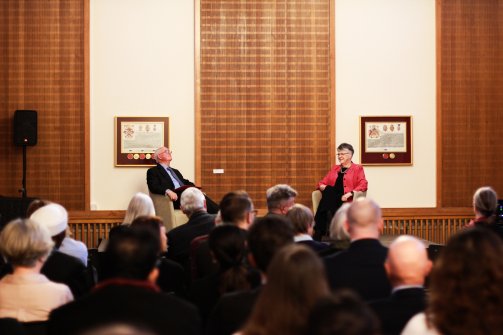How to rebuild a city with Karam Alkatlabe


Let us shine a light on tips and tools to support your research process.This week: active revision techniques.

In the last of our blog posts on revision before the Easter vacation, we are focusing on active learning.
You may have already identified which learning style works well for you. However, if you have always stuck to the same approach, it is important to try different methods which may invigorate your revision simply by ringing the changes. Kinesthetic or active learning is one approach to revision which works well for lots of people and can fit in with other aspects of your daily routine/
This style of learning means engaging with touch, imitation and practice. Also known as active learning, it is an attractive approach for those who learn more effectively by carrying out physical activities, rather than listening to a lecture or watching demonstrations. Copying vast amounts of material and condensing it should be a physical process but can, quite easily, become passive. It is easy to think that you know the information you are copying out when you see it, but can you recall it when you cover it up?
All these approaches are designed to get you away from sitting and looking at the same material in the same way for prolonged periods.
Write out a question or topic on one side of an A5 card and list the key points that you need to recall on the other. Test yourself on remembering what you have written, then check your answers. The act of writing will help with retention (as opposed to just reading) plus the physical act of turning them over to compare your answers, engages different parts of the brain. It is a bounded and measurable game, rather than trying to digest unending notes. Use them alone when you have a spare 10 minutes or ask others to use them with you, see below. If those 10 minutes are when you are out an about and may not have the cards with you, try Anki, a flash-card app which uses spaced-repetition, the focus of last week's blog entry.
Meeting up with friends to talk about revision topics is a great way to test what you know, find out about other ideas and divide up the work load. If you know that you are revising the same topic, why not each read up on a different article, topic, author or theory. Then exchange notes verbally, which tests what you have learned, helps you structure your thoughts and communicate them – key skills in the exam. Then learn from your friend as they feed back to you. Ask them questions if you (or they) don’t understand something. If you don’t feel comfortable leaving it up to someone else to share their notes, consolidate your learning by sharing what you both have learned. Having to put something into words is great way of finding out topics that you're not confident on.
Our LibGuide has a section on Note Making, highlighting alternative approaches, mainly when reading.
The most active and visual of these is the Pattern Approach, which organises keywords and concepts around a main theme in the centre of the page; what is commonly known as mind mapping. It is easy to make links to new and existing knowledge and add extra thoughts later on. This keeps the document live and active. When making linear notes it is very difficult to add to and adapt these without starting over again. With a pattern approach, if you get tired or distracted, you can stop at any point and work on a new area that interests you.
Pattern note-making is interesting to look at and with the use of colours or images it can help you remember points. Try not to fill up the page, but leave space for questions that arise. Use this approach to test yourself too: can you replicate the map on a blank piece of paper? If there is something you keep forgetting, try and make it more eye-catching.
There is no hierarchy to these notes, so as you get closer to the exam, think about adding numbers to help prioritise more important themes and topics and consider how you would introduce them in an essay.
A pile of paper on your desk or lots of computer files can be easy to ignore. Active learning is about engaging with the material in lots of different ways, so put up key ideas on your walls/doors/mirrors. Use them like flash cards, prompting you to remember key quotations or facts. When trying to recall a list of key thinkers or facts, it may help to remember that x is on the mirror and y above your desk, while z is on your wardrobe door. If you keep them loose, (re)structure them to create flow diagrams; the active process will help you remember information and make links.
If it won’t fit on a post-it, make thematic posters or timelines to help you retain key information. The act of planning and creating is great way of bringing a subject to life, which it can be tough to do with reading. Don’t spend a huge amount of time making them look beautiful, but consider adding colour, lists, numbers and shapes to make them distinctive in your mind.
Making up rhymes, mnemonics and even songs can also help with retention. Again, the act of composing them and then the ease with which you can practise them is great for active learning. Combining an activity with listening can help too. Record your notes on your phone and then play them back to yourself when you are getting dressed, too tired to look at them, if you are out and about for a walk or at the gym.
Just because revision is more active, doesn’t mean you need to skip breaks. You need to take short and frequent rests with this approach and change your activities frequently. Timetable breaks so that they feel part of your revision structure. For longer breaks, get some fresh air or take a nap. Sleeping is shown to help with information retention and you will wake feeling fresher and ready to take on the next challenge.
It is still very important to make sure that you get used to writing for defined periods of time, without access to your notes. Practising sample exams and past papers is essential. However, structure your revision time so that you can do this sort of concentrated activity when you feel rested. Trying to complete lots of questions in quick succession isn’t necessarily the most productive way to spend your time.
Generating skeleton essays or essay plans can be a good compromise to help you organise your thoughts, even if you haven’t got the time or energy to write a whole, hour-long response.
Good luck with the exam season! If you have any questions about academic skills which may help with revision, get in touch with Meg or Laura to arrange a one-to-one session.

A display of works from the Bradshaw-Bubier studio pottery collection.

How we can develop ‘death activism’ – a variety of tactics and posthuman practices which celebrate death, its inevitability, its forms, from the slow to times of crisis, and how can trauma and mourning emerge as their own forms of expression, or even activism?

We are delighted to welcome Sandi Toksvig OBE as our speaker for Wolfson's prestigious Lee Lecture this year.

Join us for the 2024 Wolfson Research Event: an interdisciplinary academic conference organised by students to showcase the diversity of the research carried out by Wolfson students.

Screening of Elia Suleiman’s Divine Intervention, in conversation with assistant director Rania Stephan.







